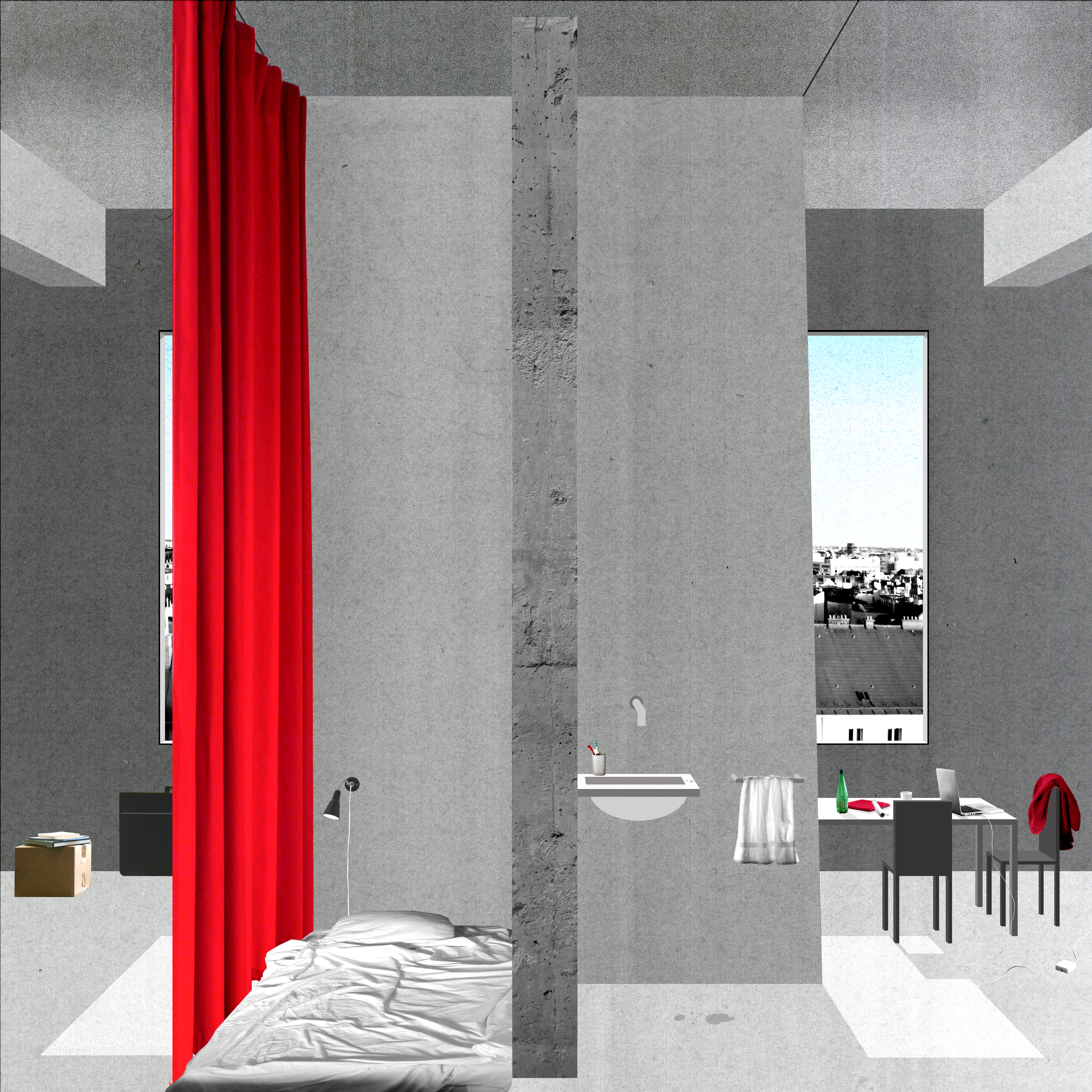
Factory for Living
A new model of Public Housing
Living & working are becoming increasingly inseparable, both in regards to working at home but also in an attempt to domesticate the workplace. It is the immaterial worker and in particular the creative professional who is affected by this condition. The immaterial worker is deterritorialised, his workflow is continuous and his output mostly invisible. Where the traditional working class had a workplace which was not only separate from home, but also a form of representation of their interests and identity (both politically and spatially), the immaterial worker lacks this kind of representation. The project therefore imagines a new model of public housing which redefines the relationship between living and working, and becomes a form of representation for the creative professional.
Vienna has a long tradition of public housing. During the period of Red Vienna (1919-1934) more than 350 housing blocks were constructed for the working class at the time. Whilst meeting the urgent demand for housing in the post war period, Red Vienna blocks also became a symbol of the working class.
A new model of public housing today reenacts the idea of architecture as a means of representation. Located in the city centre of Vienna the public housing blocks introduce new elements of production and living at strategic points.
Representation can only be achieved through awareness, both self-awareness and the awareness of others. By reappropriating an existing urban archetype and using the logic of structural reduction to reorganise individual and shared living / work spaces, the public housing blocks seem familiar yet estranging. Whilst Red Vienna remained on the level of the typology and facade in oder to give an identity to its inhabitants, a new model for public housing uses the internal organisation of activities as a form of representation.













Proposal for inner city public housing
Project developed at the Architectural Association London, Diploma Unit 14 with Pier Vittoria Aureli and Maria S. Guidici
2014